A Crash Course in Making Great Cocktails
Anyone can craft a tasty cocktail. It simply requires learning a few basic bartending skills. If you're looking to dive deeper into the world of the bar—whether at home or as a pro—then a crash course in bartending is just what you need.
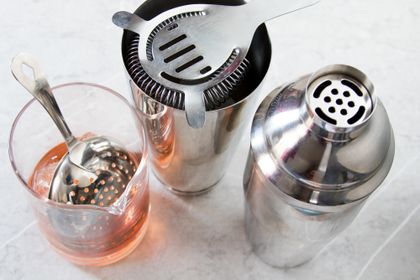
There are several things beginning bartenders should know. You'll want to familiarize yourself with the common ingredients and terminology used in the bar and cocktail recipes, essential mixing techniques like shaking, stirring, and muddling, and the gear that helps you pull it all together. It's a lot to take in all at once, but none of it is difficult, and you can take it at your own pace.
With a few basic tools paired with a few tips and tricks, your next drinks could be better than any you've made before If you keep at it and discover the joy of mixing cocktails from scratch, you'll be hooked because nothing beats a freshly made drink.
The Bar Dictionary
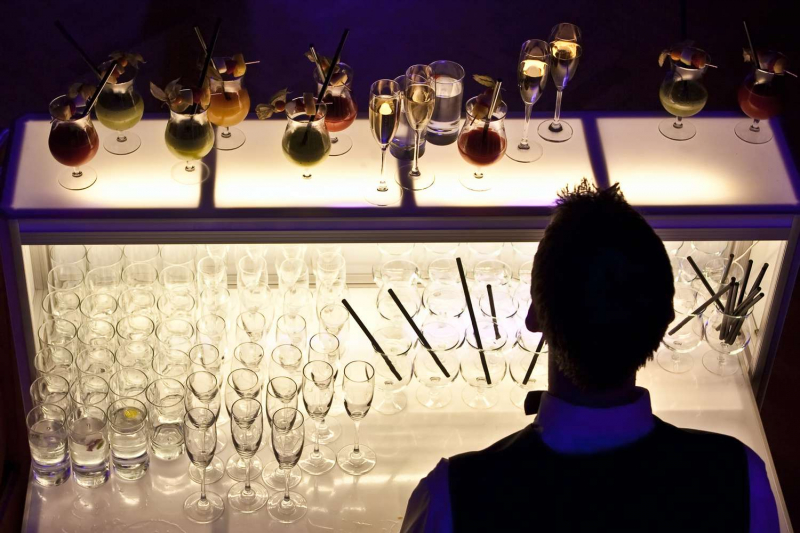
As you begin to explore bartending, you will come across a specialized vocabulary of words and phrases. Some of these are common sense, and others may not be exactly what they seem, so a little explanation is necessary.
Is it a Cocktail or a Mixed Drink?
Every drink that you mix up in the bar is a mixed drink. That's pretty clear because you are "mixing a drink," right? While mixed drinks and cocktails are often interchanged, the two do not technically have the same meaning.
- A mixed drink is any beverage that combines two or more ingredients. These drinks are often poured over ice, for example, a John Collins or a rum and Coke. Though often assumed that mixed drinks contain alcohol, this is not always the case. Popular nonalcoholic drinks like the Shirley Temple and Arnold Palmer are mixed drinks as well.
- A cocktail is a mixed drink traditionally defined as a combination of liquor(s), a sweetener, bitters, and water (diluted ice). By this definition, a brandy cocktail is a pure and classic example of a cocktail, but the martini is also considered a cocktail even though it contains no sweetener. A more accurate modern definition of a cocktail is broader than it was in the first days of the bar. In general, cocktails are fancier mixed drinks that require a little more work to construct.
To sum it up: A cocktail is a mixed drink, but a mixed drink may not always be considered a cocktail.
Cocktail Recipe Lingo
There are a few terms you'll regularly encounter when browsing cocktail recipes:
Mixers: Any ingredient—often nonalcoholic— is added to a mixed drink. For example, syrups, fruit juices, bitters, sodas, etc., are all mixers.
Dash and Splash: The smallest measurements found in a bar, these are often used interchangeably for ingredients that are mere accents in a drink. For example, "add a splash of lemon juice" or "a dash of bitters."
- The exact measurement of either a dash or a splash is not important. Technically, a dash is 1/32 of an ounce, but who's going to take the time to measure that?
- A dash is typically smaller than a splash and used for ingredients like bitters that have strong flavors.
- Depending on the ingredient, your splash may be larger or smaller. For instance, a "splash of soda" is likely more than a "splash of lime juice."
Garnish: Often a fruit, such as a cherry or an orange slice, a garnish is used to adorn a drink and add to its visual appeal. Some garnishes also add hints of flavor.
Bar Lingo
Whether you just go to the bar for happy hour or are a professional bartender, it's good to know some lingo.
- Is it a Well or Call Drink?: The "well" is a section in the bar where the "house" liquors are stored. These are used most often by bartenders because they're the most economical and lead to a good profit. "Well drinks" are ones in which the patron doesn't specify a brand, so the bartender will pick up the whiskey, rum, or tequila from the well. On the flip side, if you "call out" a specific brand of liquor, you're ordering a "call drink." For instance, you might order a Jack and Coke (with Jack Daniel's) rather than a Whiskey and Coke.
- Is it Neat, Up, or Straight Up?: This is one of the great bar debates. These words describe how a drink is served, and they are often confused with one another. Brush up on the differences, and you'll win the next argument over this one.
- On the Rocks: "Rocks" refer to ice, so a drink served "on the rocks" is served over ice. Simple stuff, but make sure your ice is fresh. It's the most underrated ingredient in the bar, but its importance cannot be discounted.
- Top-Shelf: When talking about liquor, "top-shelf" describes the best brands available. They are more expensive and (in theory) of superior quality. The name comes from the placement of these bottles on liquor store shelves: the "cheap stuff" is at the bottom and the "good stuff" is on top where it will easily catch the eyes of consumers.
The Many Uses of "Back": The word "back" is used often in the bar, and it can mean a few different things:
- A "back" refers to a drink served alongside and in a separate glass from the main drink. It's often a refreshing nonalcoholic beverage like water or soda. For instance, "I'll take a Manhattan with a water back." It's common to order a beer back: The pickleback is a popular shot served with a beer back.
- The "back bar" commonly refers to the liquor stocked on a shelf behind the bartender. This is often where you will find the top-shelf distilled spirits on display, ready to be ordered in those call drinks.
- A "bar back" is an employee of the bar who is training to be a bartender. This apprenticeship is how many bartenders learn the business, and it's a job both rewarding and tough. Bar backs do many hard-lifting and mundane tasks to ensure the bartenders have everything they need.
The Stick: The word “stick” has two meanings as well. “The stick” is often used when talking about the bar itself. A bartender may say, “I’m working behind the stick tonight” when they’re talking about working a bartending shift. It’s also common to call muddled cocktails “stick drinks” because the tool (the muddler) used to make them look like a stick.
The Bar Stock
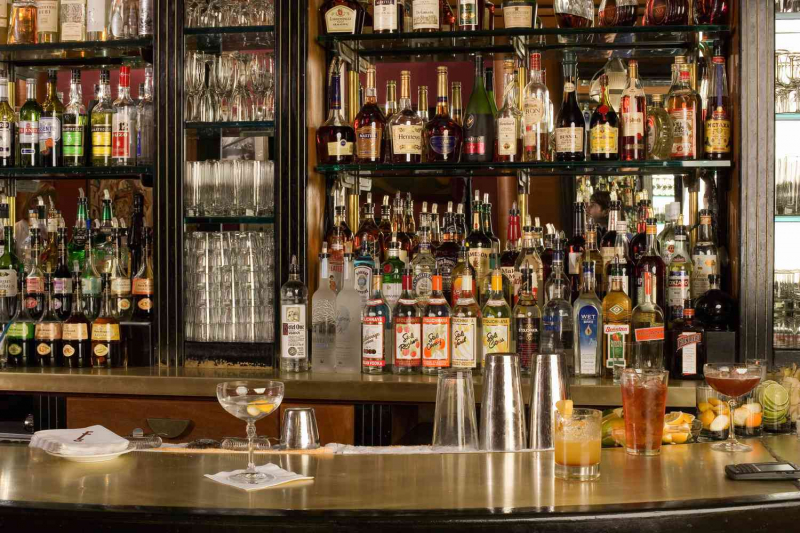
Before you can mix drinks, you should have a basic understanding of the ingredients that go into them.
Liquor vs. Liqueur
Distilled spirits are the alcoholic beverages used most often in the bar. These incorporate vodka, tequila, whiskey, etc., as well as all of the flavored liqueurs. Cocktail recipes will introduce you to many distilled spirits, including essential bottles that are stocked in a bar.
It is important to understand the difference between a liquor and a liqueur. Again, there is a sort of double meaning here: All liqueurs are a type of liquor, but not all liquors are liqueurs.
Liquors are distilled spirits. If an alcoholic beverage has gone through a still and comes out with a high alcohol content, it is a liquor. When that spirit is sweetened it becomes a liqueur.
The 6 Basic Liquors
There are six types of liquor that you will use most often in the bar. These are the "base distilled spirits" because they are the foundation for many mixed drinks and are used to produce many liqueurs. Each type has its primary characteristics, a few styles and variations, and many brands to choose from:
- Brandy: Distilled from fruits (most commonly grapes), the name derives from brandewijn, the Dutch word meaning "burnt wine."
- Gin: Often distilled from grains, gin includes the flavorings of botanicals. Juniper is the trademark flavor.
- Rum: Made by distilling sugar or molasses, rum is a sweeter liquor that is produced throughout the world.
- Tequila: Strictly a product of Mexico, tequila is distilled from the agave plant and has a distinct earthy flavor.
- Vodka: The most used liquor, vodka can be distilled from any number of ingredients, though grains and potatoes are most common.
- Whiskey: Whiskey is a complex category with a variety of styles, though they all begin with a distillate of fermented grains. Whiskies are almost always aged; moonshine is the primary exception.
Liqueurs Add Flavor
Liqueurs are just as vital to a well-stocked bar because these distilled spirits give drinks flavor. Liqueurs come in almost every flavor imaginable, from sweetened fruits and chocolate or coffee to snappy spices and proprietary blends, like Bénédictine and Chartreuse, that are truly unique.
Crème vs. Cream Liqueurs
Many liqueurs use the word "crème." Although crème translates from French to mean "cream," these are not creamy:
- Liqueurs like crème de cassis (black currant) and crème de fraises (strawberry) are typically made with more sugar than the average liqueur. They are more syrupy, but they are not creamy. Often, crème liqueurs use the French word for flavor; for example, crème de banane (banana).
- Cream liqueurs are those like Irish cream and RumChata that have a dairy base. These are actually creamy.
Other Spirits and Alcoholic Beverages
Several distilled spirits do not fall into the category of the six basic liquors and are also not liqueurs. Some do not even go through the distillation process, yet they are vital in the bar.
- Some "spirits" are simply unique and can be difficult to categorize. Among those are brand names like Veev Acai Spirit and Square One Botanical Spirit.
- Absinthe is unsweetened though it is often misclassified as a liqueur.
- Fortified wines like vermouth are not distilled but a small amount of distilled spirit is often added to "fortify" an aromatized wine.
- Popular apéritifs and digestifs like Campari, Cynar, and amaros are used in a number of cocktails. Many of these ingredients include a distilled spirit or are considered a liqueur, but this is not always the case.
- Many drinks use beer or wine. If you're going to bartend professionally, understanding the basic styles of each is extremely helpful.
Essential Mixers
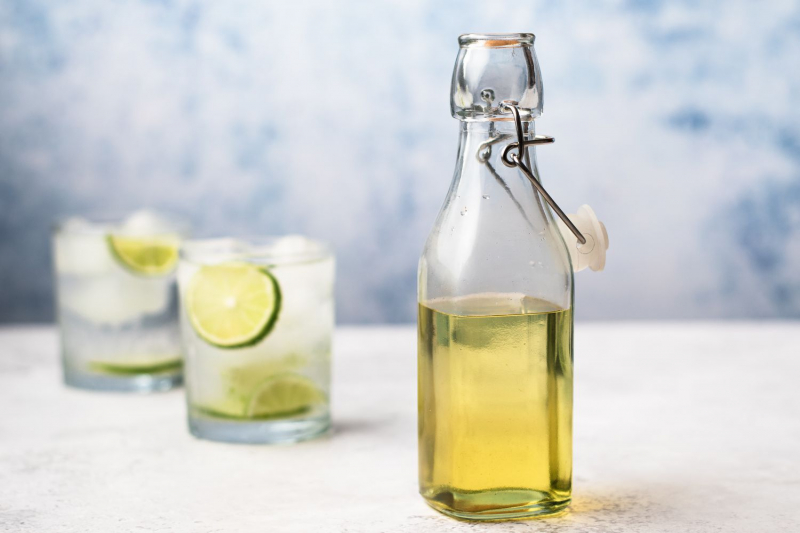
Beyond liqueurs, mixers also add flavor to a cocktail. Some are sweeteners, others add a hint of extra, but necessary, flavor to drink, and many can be made from scratch. By making your own cocktail mixers, you will not only enjoy fresher ingredients, but you can save a lot of money.
Within the bar, three types of mixers are absolutely essential:
- Cocktail Bitters: Bitters are concentrated flavor enhancements and just a dash or two will amplify the taste of many cocktails.
- Sodas: Countless mixed drinks rely on a type of soda, whether straight soda water without any flavor or sweetener, tonic water, or sweetened sodas.
- Citrus Fruit Juice: Using freshly squeezed lemon, lime, and orange juices will instantly enhance the taste of any drink. The fruits are readily available at any grocery store or market, and you have a few options when extracting their juice.
Homemade Drink Sweeteners
The bar is filled with opportunities for anyone who enjoys a DIY project. Syrups are the easiest place to begin. If you have sugar, water, and a few ingredients to add flavor, then you can do this. There's no skill involved, and most of these recipes should take less than 10 minutes of your time.
- Simple Syrup: It is called simple for a reason, and once you learn the trick to this one, you will never buy a bottle at the liquor store again. Simple syrup is used in many cocktails because it's sugar in a liquid form, making it easier to mix. It can also be flavored with little to no extra effort.
- Sour Mix: Also called "sweet and sour" or "bar mix," this is essentially simple syrup with lemon and/or lime juice added. It makes quick work of margaritas and other tropical drinks and is very useful in the bar.
- Grenadine: Next up in importance is grenadine, the pomegranate-flavored syrup that's essential to a tequila sunrise and many other great cocktails.
- Lime Cordial: A sweetened lime juice, lime cordial can be used in the popular gimlet or topped with soda for a quick, homemade lime soda.
- Gomme Syrup: In classic bartending guides, many recipes call for gomme (or gum) syrup. It is a simple syrup with gum arabic added to give your drinks a silkier texture.
Homemade Liqueurs & Infused Spirits
If you're feeling crafty in the bar, make your own liqueurs. From amaretto, and coffee liqueur to Irish cream, they're very easy though most do take some time, so plan ahead.
The easiest homemade spirits are infusions. Though flavored vodkas are the most common, you can add flavor to rum, tequila, whiskey, brandy, gin, and even liqueurs. The technique is straightforward and, depending on the flavor, it should be ready to drink in a week or two, if not sooner.
Basic Bar Gear
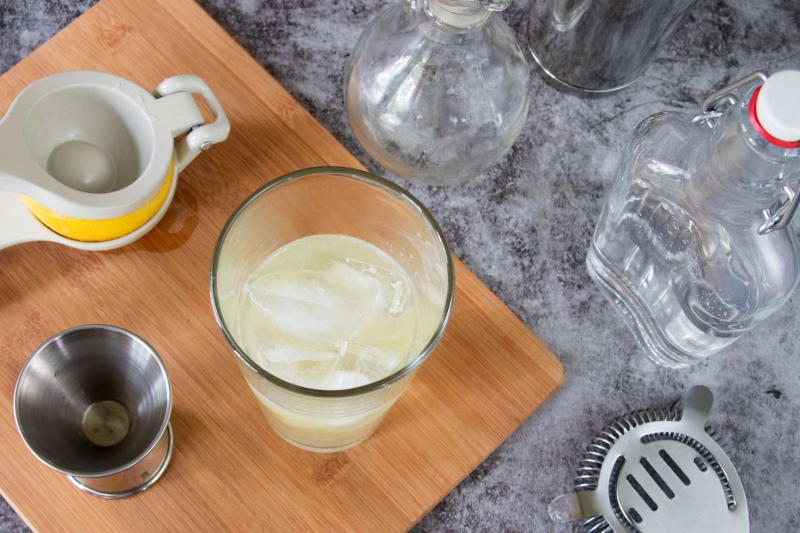
You know what goes into the drinks, now you need the tools to mix them up. There's no need to go all out, but a few bar tools are absolutely essential if you want to mix up a variety of great drinks:
- Cocktail Shaker: There are two types of shakers. One is a Boston shaker, which is a two-piece shaker made of a mixing tin and pint glass that is preferred by professional bartenders. The cobbler shaker is a three-piece shaker made of a mixing tin, a cap with a built-in strainer, and a lid.
- Bar Spoon: Designed with an extra-long, twisted shaft, this spoon is useful for stirring drinks and layering ingredients.
- Jigger: Used for measuring, jiggers include a cup on each end, making it easy to measure a shot or half shot when mixing drinks. These are also useful for cocktail recipes that use "parts" instead of volume measurements.
- Strainer: When using a Boston shaker or mixing glass, you'll need a separate strainer. The Hawthorne strainer is a popular option, though there are advantages to having a Julep strainer around as well.
- Muddler: This wooden or stainless steel stick is used to mash fresh produce and is essential for mojitos and mint juleps.
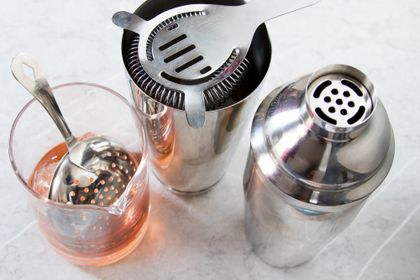
Anyone Can Make Great Cocktails
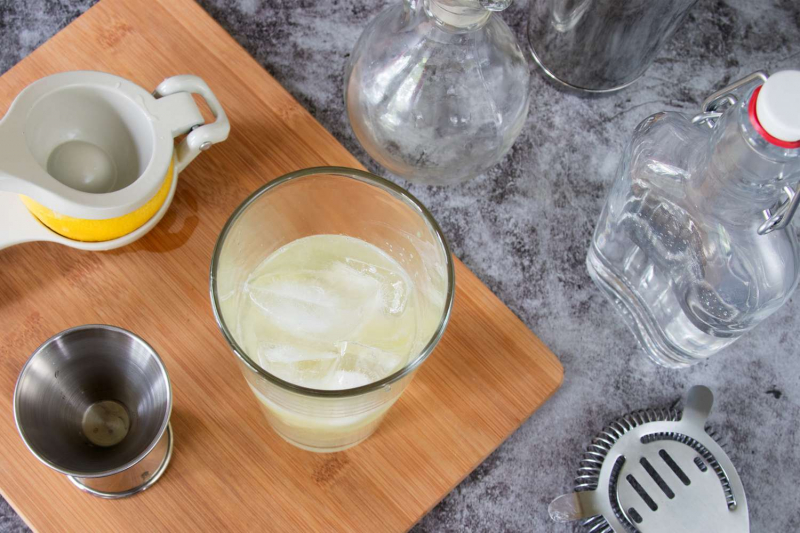
One of the greatest myths about cocktails is that they're difficult to make and you might even be asking yourself if it's worth it. Is making a pizza from scratch worth the time? Absolutely! The joy and excitement you get out of cooking can be found in the bar—even if that bar is in your kitchen.
- Think of the flavor combinations you can create and new drinks you can explore.
- Picture the look on your friends' faces when you whip out your cocktail shaker.
- Imagine how much money you'll save when you can replace those $12 martinis at the bar.
There are serious benefits to learning a few bartending skills and you'll have a ton of fun at the same time. Booze, fruit, maybe a little chocolate, how can you say "no" to that?
Mixing a great drink has a certain satisfaction to it as well, it's an accomplishment to be proud of and a skill set that you can share with others. Don't keep it to yourself, invite some friends over and enjoy the process together.
The Theory of the Bar

All of the basics of bartending have been addressed and it's time to go a little further. You may have a few unanswered questions and likely have to do with the "whys" of the bar.
There are very good reasons why bartenders use certain tips and tricks and why they pay attention to particular aspects of mixing drinks. The theory of the bar is filled with seemingly random advice but it all serves the purpose of making every drink just a little bit better.
Drink Mixing Tips
Advanced knowledge in bartending and the study of mixology sets great bartenders apart from the average drink slinger. This may get a little geeky, but that’s what we’re here for!
Here are a few drink-mixing tips:
- The Importance of Ice – Whether you’re mixing up a drink on the rocks, shaking or stirring a martini, or firing up the blender, you need ice. The only exceptions are hot drinks and a few cocktails like the Champagne cocktail.
- Measuring “Parts” – You will often find the measurements of ingredients listed in ounces, milliliters, dashes, and splashes. Those are very straightforward, but what happens when you come across a cocktail that uses the term “parts” instead? Measuring parts is quite easy, and you simply need to do a little math to make a great drink.
- The Order of the Pour – Everyone who mixes drinks—professionals and amateurs alike—has their style and preference. There is no set “rule” for pour order in the bartending world, and few bartending guides touch on the subject.
- How to Turn a Cocktail Into a Punch – The first thing to consider is which cocktails will work best as a punch. Cocktails that make good punches include fruit juices, wines, and sodas. In other words, recipes with more nonalcoholic ingredients than liquor.
Liquor FAQs
Many people have the same questions about liquor and one of these articles may just answer yours.
- How Many Shots Are in a Bottle? – The number of cocktails you can make with one bottle of liquor will vary from drink to drink. When estimating your needs, it's helpful to know what the average cocktail uses.
- Will Alcohol Freeze? – Water freezes at 32 degrees Fahrenheit (zero degrees Celsius), and the freezing point of pure ethanol alcohol is -173 degrees Fahrenheit (-114 degrees Celsius). Alcoholic beverages are a mixture of both alcohol and water (in some cases, sugars and other additives), which puts the freezing point of your alcoholic beverages somewhere in between the two liquids.
- What Is the Shelf-Life of Liquor? – Unlike some wines, distilled spirits don't age or mature in the bottle. Your unopened bottle of scotch that's been on the shelf for 20 years will taste the same as it would have the day it was bottled. However, once you open a bottle, some liquors will go bad, and others will lose character over months or years.
- What Does Aging Do? – Aging is the process of storing distilled spirits (or wines) in barrels for a specific period. The goal of maturation is to remove harsh flavors from the raw alcohol while adding distinct flavor characteristics found in the barrel's wood.
Flavor Theory
Mixed drinks are all about combining flavors and finding a perfect match to create one stunning drink. If you like to develop your own cocktail recipes and are looking for fresh ideas, using fruits or herbs is a great place to start.
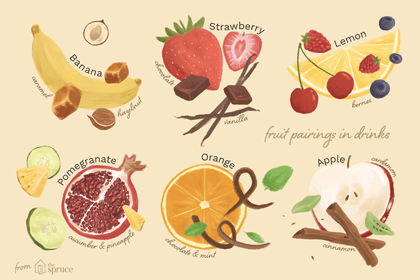
Safety & Responsibility in the Bar
Alcohol is not a thing to be taken lightly. As much fun as we have with it, there is a certain level of responsibility that comes along with making drinks.
- What Is the Proof of My Cocktail? – Two numbers on liquor bottles indicate exactly how strong the distilled spirit is: alcohol by volume and proof. The two can easily be converted back and forth, though they have different purposes.
- Safely Using Eggs in Cocktails – Pasteurized eggs in the shell are the recommended choice for any food or drink that includes raw eggs, according to the USDA. Purchase eggs out of refrigerated cases only. When in doubt, toss it. Choose eggs with no cracks or damaged shells. Check the dates on the container and look for the USDA stamp (or your country’s equivalent) that indicates the eggs were inspected. Professional bartenders need to check with state laws before serving egg cocktails. Many areas prohibit serving raw eggs to customers.
- Safety Tips for Flamed Drinks – When making this drink, you are literally playing with fire! Safety is your top priority when mixing alcohol and fire, so play it smart and follow a few tips. Practice pouring with water first. It’s also a good idea to pour over a tray full of water. Have a fire extinguisher nearby. Small fires can be put out with water or your fire extinguisher—so be prepared just in case an accident does happen.
Essential Drink Mixing Techniques
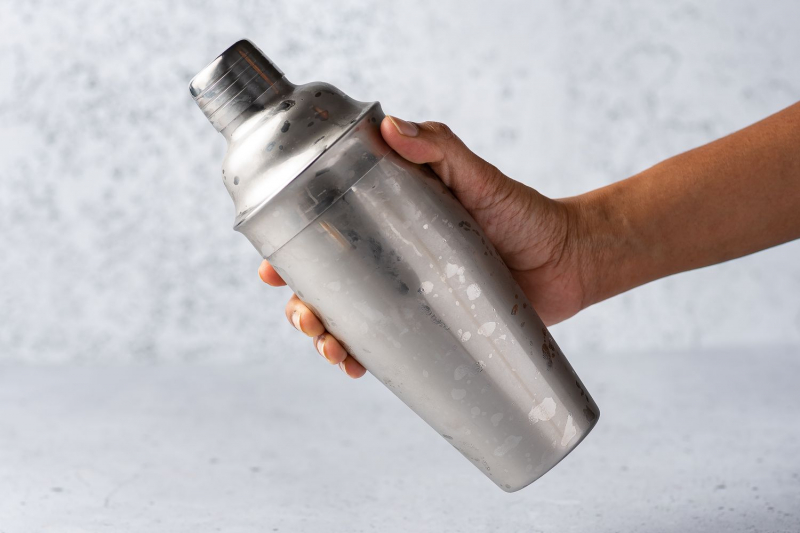
Once you have the ingredients and tools, it's time to mix up a drink. Most cocktail recipes are self-explanatory—shake it or stir it—easy stuff, right? While bartending techniques are elementary, a few helpful hints will make your drinks just a little better.
Essential Bar Techniques

This section truly is "Bartender 101," and the majority of drinks use one of these techniques:
- Shaken or Stirred: Generally, you will shake cocktails with juices and other heavily flavored ingredients. On the other hand, you will stir drinks primarily made of liquor or those poured directly into a glass.
- Straining Cocktails: Whether you are shaking or stirring, in most cases, you don't want to serve the same ice you mixed your drink with. The ice is broken down and will not last long, so straining is necessary for better drinks.
- "Build" Drinks: Many of the easiest drinks (think of the vodka tonic) are "built" directly in the glass they're served in. This is the simplest bartending technique, and you've probably been doing it for years.
- "Top" a Drink: Often, a recipe will say, "top it off with soda." While the ingredients can change, the idea is always the same: Finish off the drink by filling the glass.
- Blend Cocktails: If you're a fan of frozen cocktails, then a few tips and tricks for working that blender will do wonders for improving your summertime favorites.

Advanced Mixing Techniques
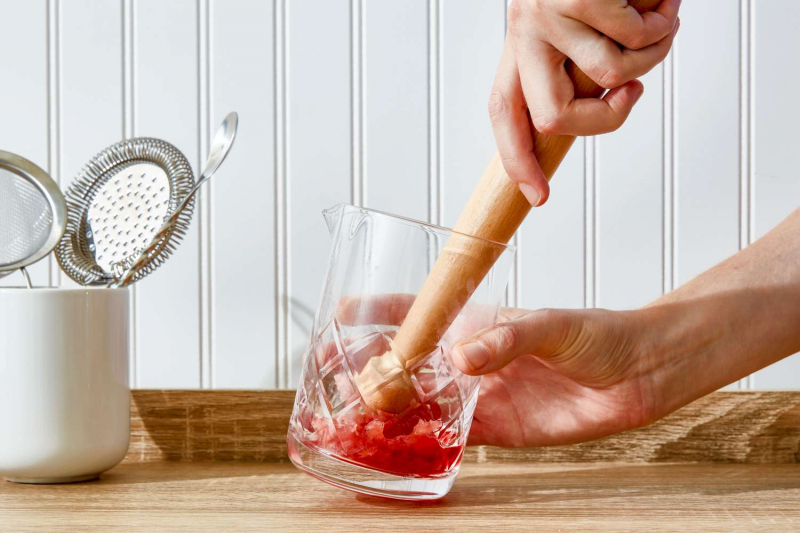
When you're ready to dig a little deeper and mix drinks like a true professional, add these mixing techniques to your skillset. Each will require some practice, but they are relatively easy to master.
- Roll a Drink: Mix a drink by "tossing" it from one vessel to another. Typically done between two pints, it's important to use glassware of similar size. This technique is great for heavy drinks like the Bloody Mary.
- Layer Cocktails: "Float" ingredients on top of one another to create cool layers.
- Muddle Cocktails: Smashing drink ingredients to bring out their essence. From the mojito to the old-fashioned, it's required for many of the freshest cocktails.
Drink Presentation 101
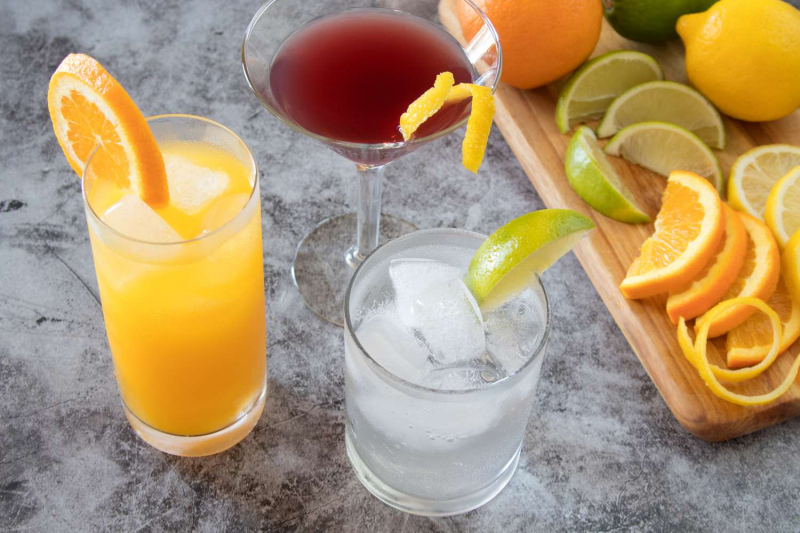
Cocktails are supposed to not only taste great, but they should also look good. Small things like choosing the right glass and garnish will step up the look of every cocktail you make.
There is no one-size-fits-all glass for drinks, and different styles of drinks require different styles of glassware. You don't need to stock every style. Instead, base your decisions on the types of cocktails you like to mix up most often.
Once you have the glasses, you will want to properly prepare them for your cocktails:
- How to Chill a Glass: Every cold drink should go into a cold glass. Taking the time for this simple step is one of the tricks to getting your cocktails to taste like those of a professional bartender.
- How to Rim a Glass: Do you enjoy a little salt with your margarita? Whether it's sugar, salt, or some other flavoring, adding a custom rim to any glass is simple and enhances the experience.
Great Garnishes
While their primary purpose is ornamental, garnishes can add a bit of flavor to drinks as well. You can generally skip the garnishes in your everyday drinks, though it is a nice touch if you are entertaining. Used all the time, it's a good idea to practice cutting the basic citrus garnishes.
There are also some shortcut garnishes—such as those jars of bright red maraschino cherries—that you can replace with a higher-quality alternative. Choose real maraschino cherries or make your own brandied cherries to up your cocktail game.